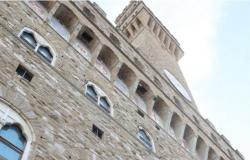
“I can say that I own all of old Paris,” wrote the then little-known Eugène Atget in 1920, who spent about 30 years systematically photographing the architecture and urban layout of the city. “Cities are like a book that you have to read in its entirety, otherwise you risk not grasping its meaning,” states Gabriele Basilico, perhaps the best-known urban landscape photographer in the world, in his 2007 book.
Their views – different and complementary, distant in time and very distant in terms of technical means, training, sensitivity and motivations – are brought together for the first time at Atget) in the photographic exhibition “From Atget for Basil. Archeology in seeing”, curated by Steve Bisson, professor at the Paris College of Art and artistic director of Lab 27, and Dionisio Gavagnin, collector and writer.
An exhibition that questions the representation of places, which unites the paths of the two photographers by exploring their practice in the “archaeological” perspective of the title, highlighting the evolutionary processes that have marked the course of the history of photography, underlining the relationship between the medium of photography , time and history. But also by investigating the mutation of urban landscapes and the photographer’s responsibility in watching and documenting, in being a witness and conservator.
Adget versus Basilico, the comparison
In the very pleasant spaces of Lab 27, the images of a Paris of the past wrapped in the enigmatic aura of Atget – who in life received the attention of dada and surrealist avant-gardes through Man Ray, but whose fame only grew after his death (1927) – intersect with those of Basilico half a century later. And if his lens portrays different places and a profoundly changed world, Basilico picks up from Atget the need to establish the plot of the transformation of urban spaces even starting from afar.
As, for example, in “Provincia Antiqua” series which collects views of French archaeological sites evoking the beauty of the past. Images which in the exhibition itinerary also have the breath of a sort of homage paid by the methodical Italian photographer-architect to the Parisian photographer-flaneur, in the name of that “archaeology of seeing” which recounts the transformations of the perception of reality and the way of looking at it.
Practical info
The exhibition is open until May 26th, on Sundays from 4pm to 7pm or by appointment (lab27. it@gmail. com). Free admission.





